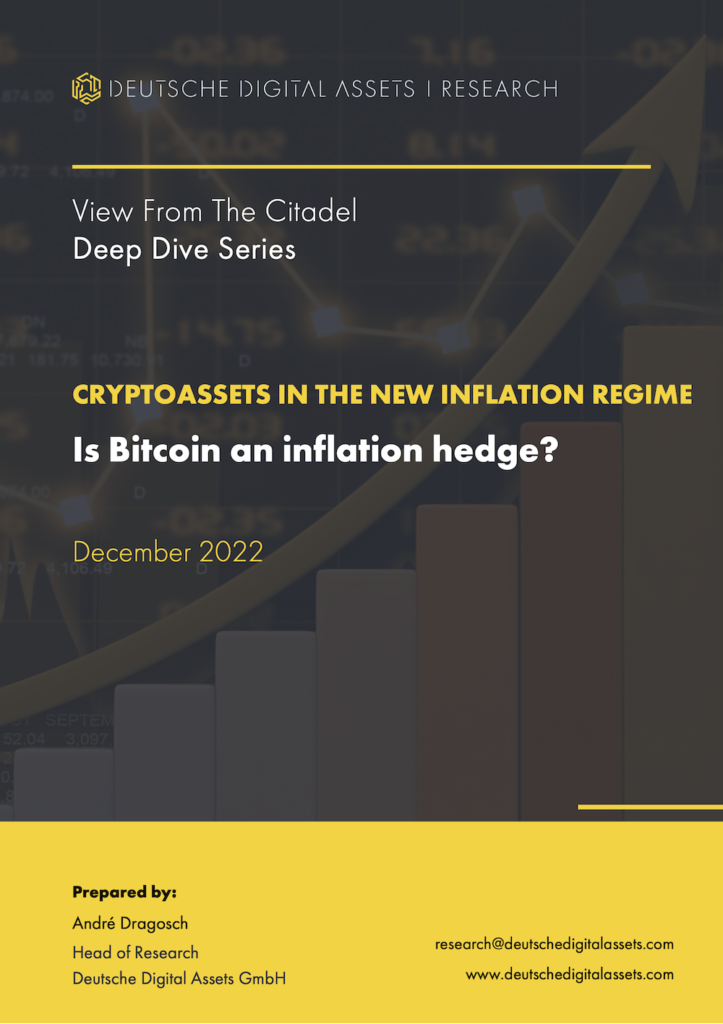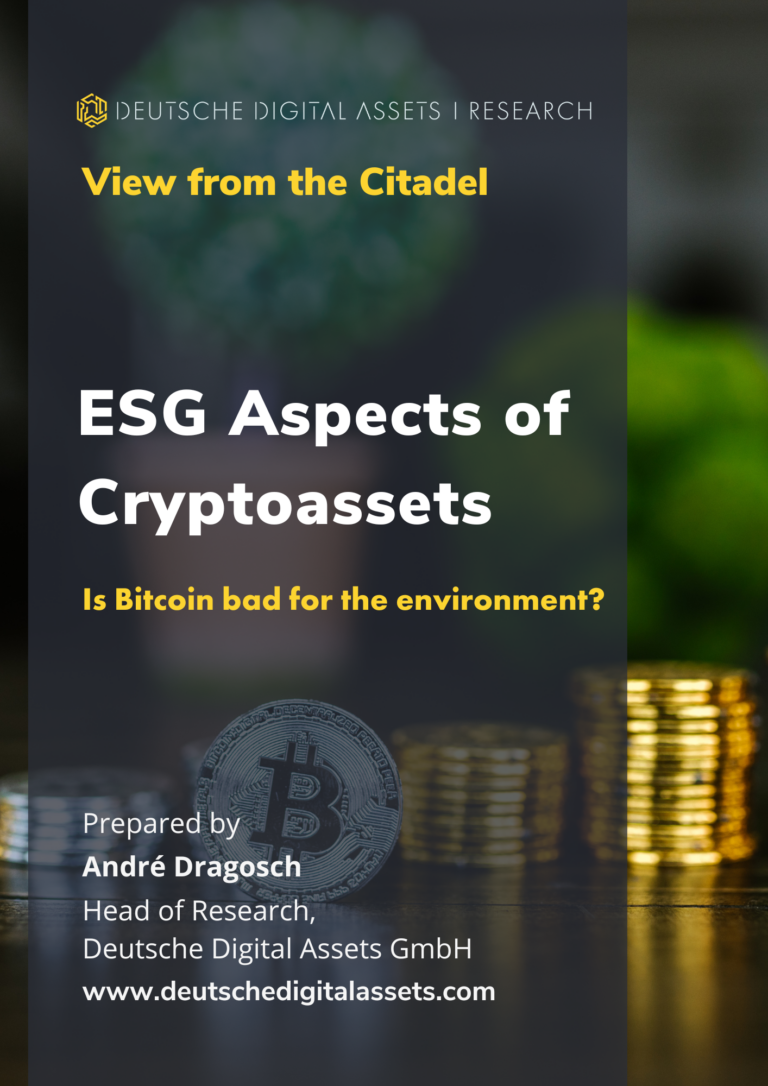This report analyzes the question whether cryptoassets and in particular Bitcoin can serve as an inflation hedge within multiasset portfolios.
Although inflation dynamics will likely continue to decline throughout the next year, we provide evidence that high inflation rates will be the “new normal” in the medium to long term.
Amongst other things, the study shows that there are different types of inflation with different degrees of importance to investors. Moreover, the study demonstrates that there are different channels via which monetary policy affects inflation. Because monetary policy affects realized inflation with “long and variable lags”, it must rely on market-based inflation expectations and other more leading indicators to assess the impact of its policies in a timelier manner.
Furthermore, the study embarks on an empirical study and shows how Bitcoin changes are leading changes in realized CPI inflation and appear to be more correlated to changes in inflation expectations. Realized inflation can occasionally diverge from market-based inflation expectations and therefore might be a misleading yardstick to compare Bitcoin to.
The author of this study expects the structural decline in Bitcoin volatility to continue with every halving and the rise in adoption. Therefore, it is also expected that the correlation and sensitivity of Bitcoin to inflation expectations will increase even further as Bitcoin scarcity becomes even more pronounced than for Gold. The recent underperformance of Bitcoin during the latest monetary policy tightening cycle was consistent with falling inflation expectations.
The study continues with an overview of both structural and cyclical factors that will increase inflationary pressures and dampen inflationary pressures. On the one hand, poor demographics and productivity growth will likely dampen inflation in the medium to long term. On the other hand, increasing geopolitical tensions, the green transformation of the economy, as well as an imminent reversal in money supply growth are bound to increase inflationary pressures structurally and cyclically. Although there is no evidence that high levels of US government debt are associated with high inflation in the US, high US debt levels are usually associated with financial repression via negative real yields on US government bonds.
Contrary to prevailing opinion, the study demonstrates that neither gold nor commodities have performed well as an inflation hedge since 2010. In contrast, US real estate and Bitcoin have outperformed US CPI inflation in most years while Bitcoin returns have on average both outperformed inflation on a nominal and real basis by a very wide margin.
However, commodities and in particular gold have served well as an inflation hedge when considering the high inflation periods of the 1970s and 80s as well. A larger allocation in gold has historically increased inflation-adjusted multiasset portfolio returns in high inflation regimes (>5% US inflation).
Nonetheless, traditional inflation hedges such as US real estate and gold currently appear to be particularly overvalued with significantly negative expected returns over the medium to long term. At the same time, Bitcoin valuations are currently relatively attractive. The study concludes with the empirical observation, that over the past 12 years, a small allocation of 5% in Bitcoin as substitute for an allocation in Gold would have significantly increased average risk-adjusted returns of a multi-asset portfolio with only a minor increase in average portfolio volatility and max drawdowns.
The report is written by André Dragosch, Head of Research at Deutsche Digital Assets.
Deutsche Digital Assets actively works on producing research reports delivering quality insights about the world of digital assets. Sign up here to receive our latest research reports, weekly market analysis and the latest insights on macro, industrial and crypto market trends from our top experts, delivered straight to your inbox.
Download Report Now
















